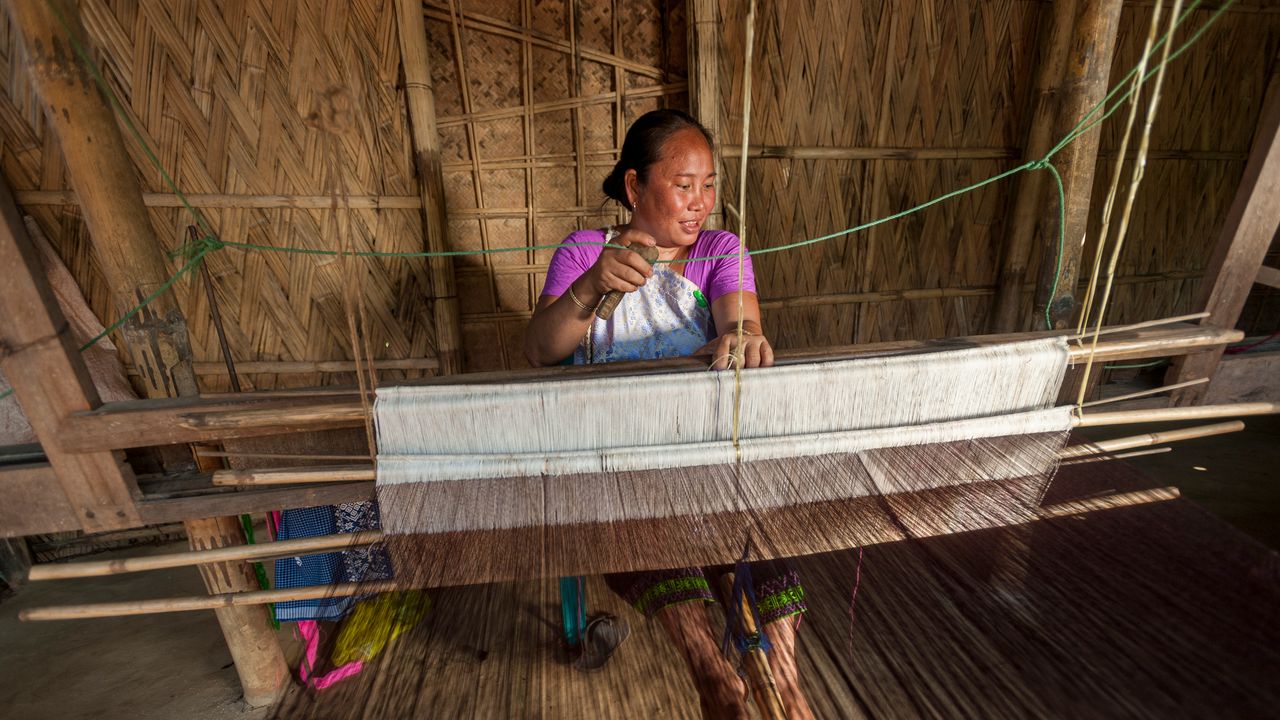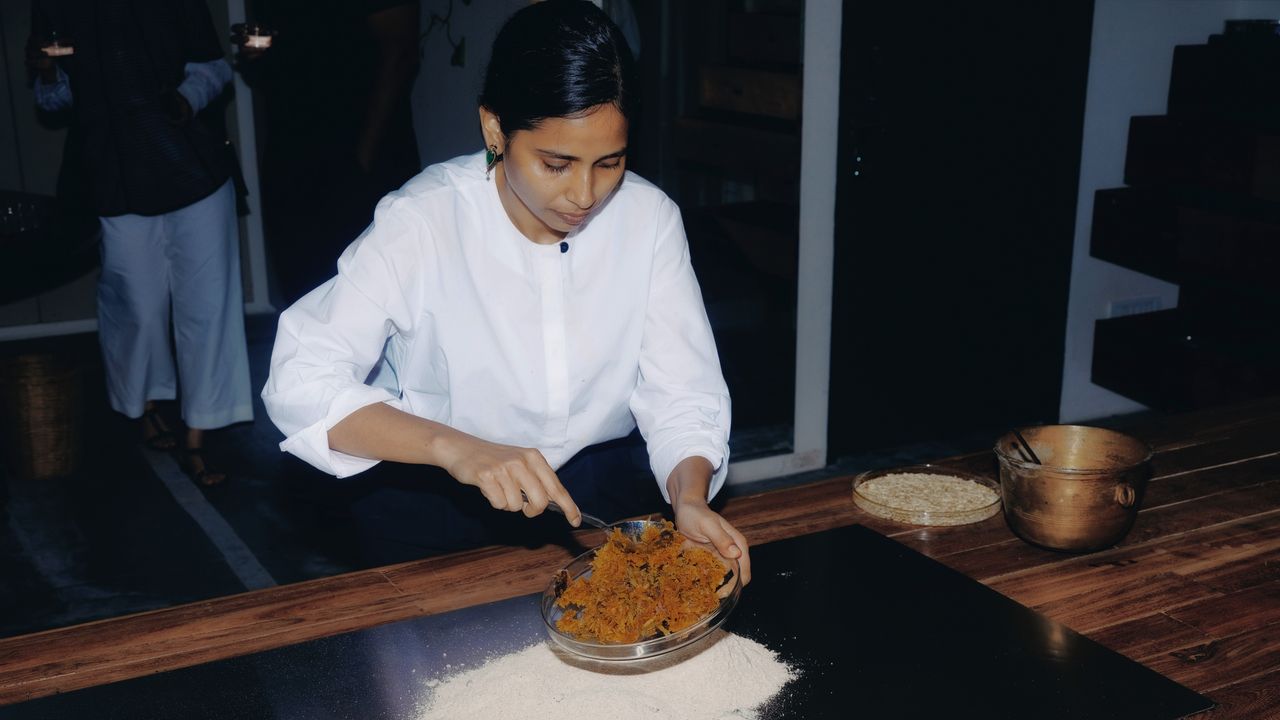Blog
From Apatani to Moirang phee—mapping out India’s lesser-known handlooms

Woven on simple pit looms by Tripuri women, rignai is a burst of colour and geometry that serves as the cultural fabric of the state. The GI-tagged textile features intricate stripes and diamond motifs, whose creation demands both dexterity and patience since each pattern is counted and picked by hand, one thread at a time. For centuries, every Tripuri woman has woven her own rignai, making each an heirloom that tells familial and tribal stories. As urban markets awaken to the appeal of tribal crafts and fashion, rignai stands as a steady contender.
Chettinad, Tamil Nadu
Huda Kareem/Getty Images
A bold display of South Indian opulence and craftsmanship, the Chettinad sari is named for the region it hails from in Tamil Nadu. The saris are known for their distinctive borders narrating stories, in vibrant colours, of the architecture, cuisine, temples and culture of the region. The remarkable weaving technique, called korvai, involves weaving the borders and sari separately, ensuring a striking contrast of hues. Despite its structured finish—achieved through the use of pit looms—the fabric is still breathable and fluid, as it is woven from fine cotton threads.
Kuchai, Jharkhand
Kuchai silk is Jharkhand’s organic wild silk treasure, crafted with silk from silkworms reared on asan, arjun and sal trees. Over 30,000 artisans preserve this ecofriendly legacy by producing silk without any chemical processing, relying on traditional knowledge for yarn extraction. The process begins with villagers gathering cocoons from forests by hand and reeling the silk into glistening yarn. Today, Kuchai’s natural sheen and earthy texture attract the attention of those seeking meaningful, sustainable handloom fabrics.
Also read:
Handloom saris should be on everyone’s radar, here are 19 brands to watch out for
Handloom has been romanticised by a lot of brands, but this label hopes to add much-needed transparency within the system
Meet the ‘Dress Doctors’, an invisible workforce restoring our heritage textiles, stitch by stitch


